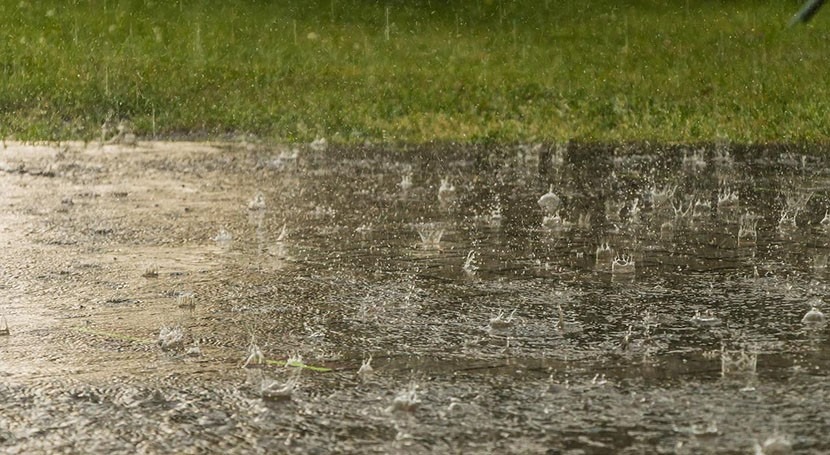When William Blake described England’s “green and pleasant land” in his poem Jerusalem, he was actually writing during a prolonged drought. Two centuries later, much of Europe is withering under successive heatwaves amid one of the most extreme droughts ever recorded.
The latest satellite image of England captured by Nasa shows not a green and pleasant land but one which is brown and parched. Under all that dry vegetation is sun-baked, dusty and desiccated soil.
Heavy rain and thundery showers are now forecast for much of the UK. No doubt the promise of a good downpour will please farmers, for whom the drought has been particularly punishing. Bizarrely though, heavy rain may not be what their thirsty soil needs right now.
A soil normally acts like a sponge which soaks up moisture when it rains. Having been baked for weeks by intense heat with little respite, soil surfaces have hardened.
As a result, the soil’s infiltration capacity (the maximum rate at which soils can absorb moisture) has diminished. If rain falls at such an intensity that this rate is exceeded, the water will run off the soil surface, potentially triggering flash floods and other hazards downslope.
When heavy rain falls, tonnes of soil can be eroded into the flow and rushed out of farm gates. There, it is washed into rivers, and spat out to sea in a brown plume that can occasionally be seen from space.
Likewise, flash floods can leave thousands of households with thick carpets of sand, silt and clay. Cleaning up after extreme rainfall can drain wallets very quickly, but there is a larger and longer-term cost.
Soil erosion is a major threat to the resilience of the environment. Proactive measures to curb erosion are essential to ensure soils continue supporting food production, sustaining habitats and biodiversity, cycling nutrients and safely storing the carbon fuelling climate change.
Here are five options for preventing soil running off the land.
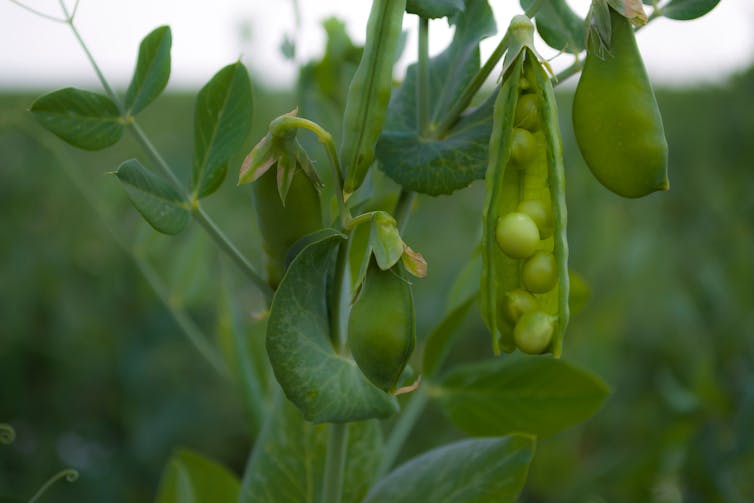
1. Don’t leave soils bare
A bare soil is particularly vulnerable to erosion. Extreme heat can make some harvests come early, leaving soils bare for longer. Farmers can grow cover crops such as brassicas, legumes and grasses to protect soils from being exposed between periods of crop production.
As well as shielding the soil from rain splash, some cover crops can suppress weeds and fungal diseases, replenish carbon and offer food and habitat to wildlife.
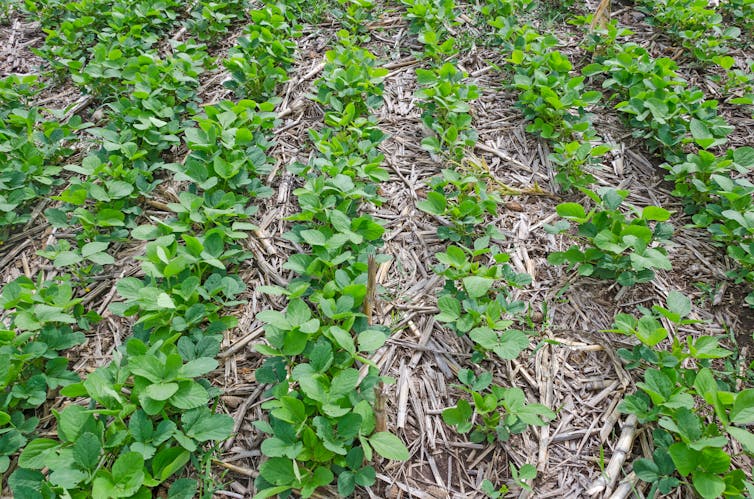
2. Adapt tillage practices
Soil tillage (digging, stirring and overturning it) is one of the most practised methods of preparing the land for growing crops. But tilling the soil too vigorously can damage its internal structure.
A healthy soil has a continuous network of pores and channels capable of storing and transporting air and water. Lining this network are mineral and organic aggregates. Maintaining the soil’s structure is vital, not only for bolstering its resistance to erosion, but for enhancing how much water can infiltrate it.
Shifting towards less intensive tillage practices – reduced or zero tillage farming – has been shown to be effective at curbing soil erosion. Ploughing across slopes rather than down them can reduce it even further.
3. Watch out for overgrazing
Grazing livestock like cattle can maintain grassland habitats and support native wildlife, but overgrazing can be a problem. If vegetation is stripped from the land faster than it can naturally recover, soils are left bare and prone to erosion.
Overgrazing can also compact the soil, making it less effective at soaking up moisture and increasing the likelihood that water will run off the surface.
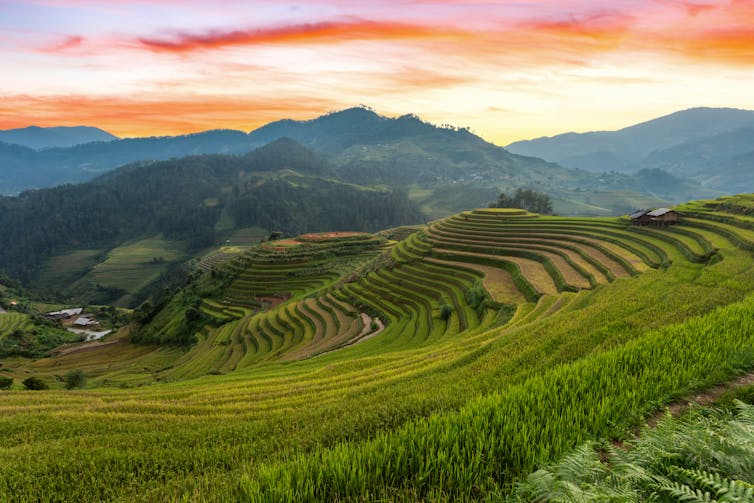
4. Consider terracing steep slopes
Steep slopes funnel water downhill fast. Building a series of level steps into the slope where food can be grown, a practice known as terracing, is an effective engineering solution.
Hillslope terracing has been adopted by farmers for millennia, and can be particularly good at reducing water runoff and sediment erosion, especially if regularly maintained. Levelling the slope can also help water infiltrate the soil and increase how much water it can hold.
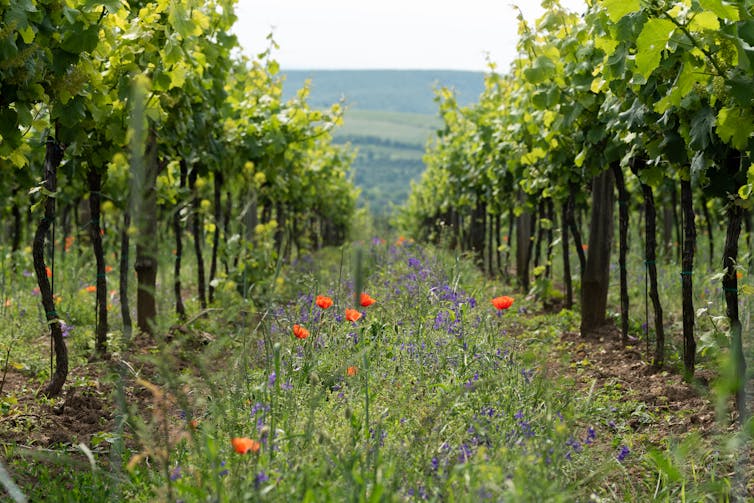
5. Grow a buffer strip
For fields bordering rivers and streams, planting buffer strips of vegetation on the boundary with the watercourse can offer multiple benefits beyond reducing soil erosion.
Comprised of grass and shrubs, buffer strips increase the roughness of the land which slows the water running off it. Planting trees in buffer strips can help stabilise riverbanks, shade livestock and reduce the runoff of agricultural chemicals into rivers. As well as combating soil erosion, buffer strips feed and shelter pollinating insects, enriching a farm’s biodiversity.
Be proactive not reactive
It only takes a second to open an umbrella and protect yourself from a downpour. Protecting soil from erosion demands more proactive measures.
These five recommendations can build a soil’s resistance to erosion, particularly during the spells of heavy rain which often follow heatwaves. If implemented and maintained, these strategies can have lasting additional benefits for soil fertility, biodiversity and slowing climate change.
![]()
Dan Evans, 75th Anniversary Research Fellow, Soil and Agrifood Institute, Cranfield University
This article is republished from The Conversation under a Creative Commons license. Read the original article.




